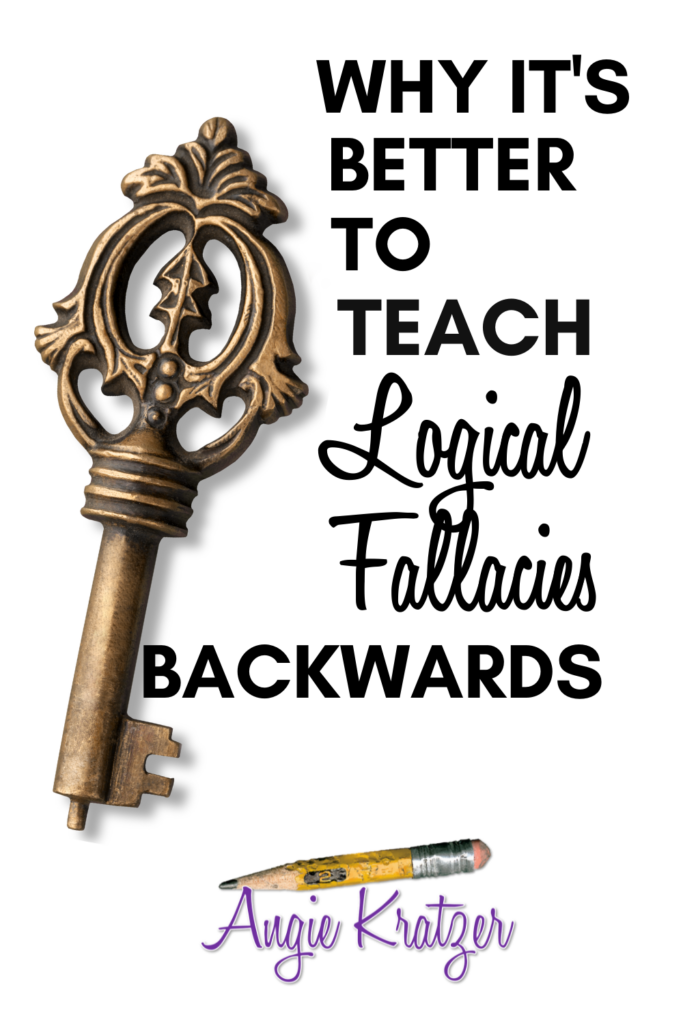
Wondering how to teach logical fallacies? Don’t. Show them fallacies and let them come to the definitions.
I would guess that about 90% of our language is metaphorical. Try telling that to a teenager and then show her a sentence that mixes five different metaphors. She just can’t see it. Students are swimming in stale, metaphorical language, so it is all they know. English teachers see in color, I think, so a metaphor jumps out in neon green. We see all five of them.
That’s what teaching logical fallacies is like; teenagers live in manipulation mode, so they are constantly exposing themselves to 30-second commercials on television, product placement in movies, and even branded athletic uniforms. They LIVE IN IT, so they can’t see it. When Treasury agents are being trained to spot counterfeit bills, they are NEVER shown counterfeit bills. The bulk of their training is the close, magnified scrutiny of real bills produced by the Department of the Treasury. A Secret Service agent knows every line, curve, color, and symbol of every denomination. Why? It’s so that a fake sticks out like a sore thumb. There are at least seven metaphors in this paragraph, by the way. You get a gold star if you can catch them all.
Back to logical fallacies. Here’s my point: They are nearly impossible to teach because they are part of the fabric of life. We’re trying to teach students to recognize manipulation when it’s all they hear. Instead of giving students a fallacy and then defining it, I go through the back door so that they do the thinking. Instead of memorizing definitions, they are creating definitions based on the characteristics they catch in examples I provide. Here’s how it looks:
Step 1: Give students a fallacious statement. We either have to cut Medicare or leave a huge debt for our children.
Step 2: Ask students three questions. What is the lie? What is the trick? What is being left out?
Step 3: Working alone, students define the lie. Initial answers may be vague, fumbling attempts at defining the kind of manipulation being used, but thinking is happening. For the example give in Step 1, students m ight come up with something like “Only bad choices are given” or “going negative.”
Step 4: In pairs, students refine their original definitions. This is a great place for scaffolding. Bring a pair to the front of the room and have students think aloud and process the refining of their definitions. The teacher could even be one of the partners for the first model.
Step 5: Give students the term and definition. Now you’re at the front door, but this time, students walked through the house to get there.
I call this strategy The Discovery Method or The Back Door Method. Either label works because students are taking themselves to the answer instead of being spoon fed. Give it a whirl and let me know how it went.
I’ve created a bit of a content upgrade for you! My Logical Fallacies Discovery Organizer is a FREE ten-page exercise that will make smoke come out of their ears. I won’t lie: This activity is challenging.
Send me my FREE Logical Fallacies Discovery Organizer.



